Browse lipids - Glycerophospholipids (GP)
| Lipid Name | Description | |
|---|---|---|
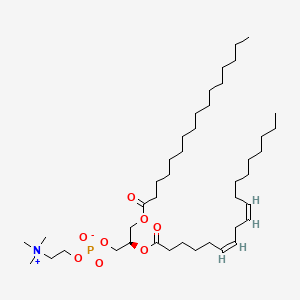
|
PC(16:0/18:2(6Z,9Z)) |
PC(16:0/18:2(6Z,9Z)) is a lipid of Glycerophospholipids (GP) class. |
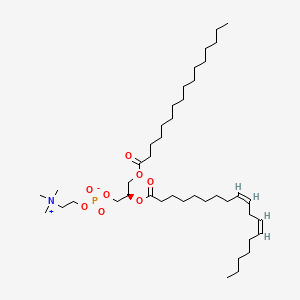
|
Soybean phospholipid |
Soybean phospholipid is a lipid of Glycerophospholipids (GP) class. The involved functions are known as 5-(carboxyamino)imidazole ribonucleotide mutase activity, Laser-generated electromagnetic radiation, physiological aspects, Genetic Translation Process and Saturated. Soybean phospholipid often locates in Head, Tissue membrane, Membrane, extrinsic to membrane and Cytoplasmic matrix. The associated genes with Soybean phospholipid are THEMIS gene, C10orf27 gene and G-substrate. The related lipids are Unilamellar Vesicles, LYSO-PC, Phosphatidic Acid, Lysophosphatidylcholines and palmitoyl lysophosphatidylcholine. |
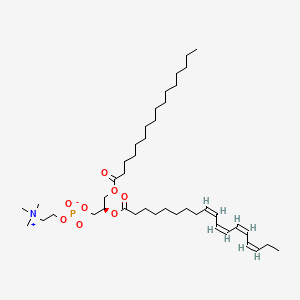
|
PC(16:0/18:4(9Z,11Z,13Z,15Z)) |
PC(16:0/18:4(9Z,11Z,13Z,15Z)) is a lipid of Glycerophospholipids (GP) class. |
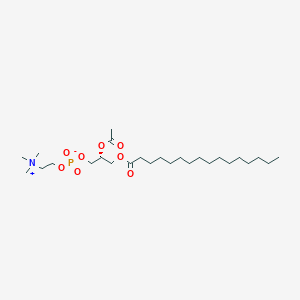
|
CHEBI:75219 |
CHEBI:75219 is a lipid of Glycerophospholipids (GP) class. |

|
1-Palmitoyl-2-docosahexaenoyl-sn-glycero-3-phosphocholine |
1-Palmitoyl-2-docosahexaenoyl-sn-glycero-3-phosphocholine is a lipid of Glycerophospholipids (GP) class. |
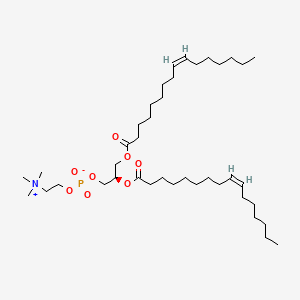
|
L-Dipalmitoleoyllecithin |
L-Dipalmitoleoyllecithin is a lipid of Glycerophospholipids (GP) class. |
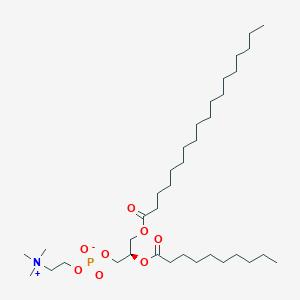
|
PC(18:0/10:0) |
PC(18:0/10:0) is a lipid of Glycerophospholipids (GP) class. |
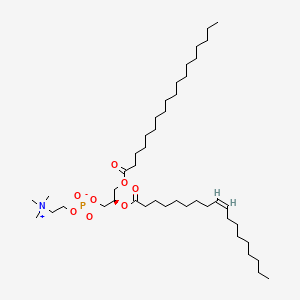
|
SOPC |
SOPC is a lipid of Glycerophospholipids (GP) class. Sopc is associated with abnormalities such as Gigantism. The involved functions are known as Anabolism, Pressure- physical agent, cell transformation, enzyme activity and Molecular Dynamics. Sopc often locates in Plasma membrane, Membrane, Tissue membrane, Lipid Bilayers and Microsomes. The associated genes with SOPC are THOC4 gene, Integral Membrane Proteins and peptide L. The related lipids are Liposomes, Unilamellar Vesicles, 1,2-oleoylphosphatidylcholine, Sphingolipids and Sterols. |
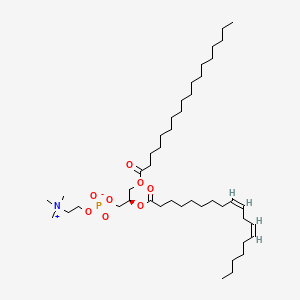
|
1-Stearoyl-2-linoleoylphosphatidylcholine |
1-Stearoyl-2-linoleoylphosphatidylcholine is a lipid of Glycerophospholipids (GP) class. |
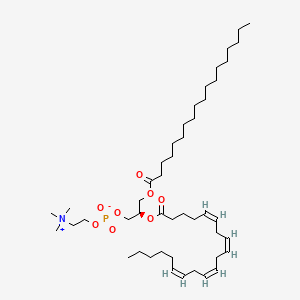
|
Phosphatidylcholine(18:0/20:4w6) |
Phosphatidylcholine(18:0/20:4w6) is a lipid of Glycerophospholipids (GP) class. |
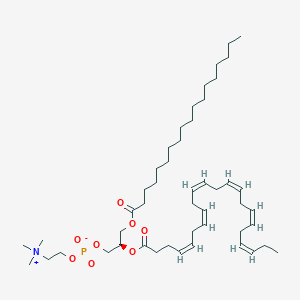
|
1-stearoyl-2-docosahexaenoyl-sn-glycero-3-phosphocholine |
1-stearoyl-2-docosahexaenoyl-sn-glycero-3-phosphocholine is a lipid of Glycerophospholipids (GP) class. The involved functions are known as Electrolyses, Drug Interactions, LIGHT SCATTERING and Adjudication. 1-stearoyl-2-docosahexaenoyl-sn-glycero-3-phosphocholine often locates in Tissue membrane, Cell membrane, lipid raft and Lipid Bilayers. The related lipids are 1,2-oleoylphosphatidylcholine, Sphingolipids, 1-palmitoyl-2-docosahexaenoyl-sn-glycero-3-phosphocholine and Sterols. |

|
PC(18:1(9Z)/14:0) |
PC(18:1(9Z)/14:0) is a lipid of Glycerophospholipids (GP) class. |
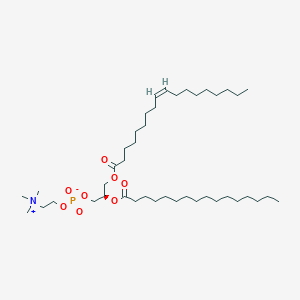
|
PC(18:1(9Z)/16:0) |
PC(18:1(9Z)/16:0) is a lipid of Glycerophospholipids (GP) class. Pc(18:1(9z)/16:0) is associated with abnormalities such as protrusion. The involved functions are known as Process, phospholipase A1 activity, Immunoreactivity, Collision and Chromosome Pairing. Pc(18:1(9z)/16:0) often locates in Membrane, Cell membrane and membrane fraction. The related lipids are 1-oleoyl-2-palmitoylphosphatidylcholine, LYSO-PC, dioleoyl phosphatidylethanolamine, lysophosphatidic acid and Phosphatidic Acid. |
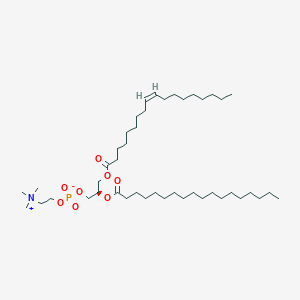
|
1-oleoyl-2-stearoyl-sn-glycero-3-phosphocholine |
1-oleoyl-2-stearoyl-sn-glycero-3-phosphocholine is a lipid of Glycerophospholipids (GP) class. 1-oleoyl-2-stearoyl-sn-glycero-3-phosphocholine is associated with abnormalities such as Lyme Disease, Syphilis and neuroborreliosis. The involved functions are known as phosphoglycerate dehydrogenase activity, Antibody Formation, Immune response and Antigenic Diversity. 1-oleoyl-2-stearoyl-sn-glycero-3-phosphocholine often locates in Flagella, IgG antibody and IgM immunoglobulin complex, circulating. The associated genes with 1-oleoyl-2-stearoyl-sn-glycero-3-phosphocholine are synthetic peptide, Homologous Gene and Genome. The related lipids are 1-oleoyl-2-stearoylphosphatidylcholine. |
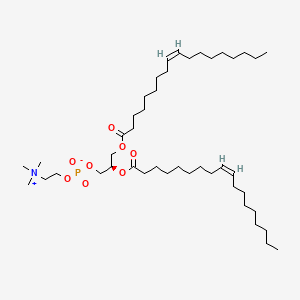
|
1,2-Dioleoyl-sn-Glycero-3-Phosphocholine |
1,2-Dioleoyl-sn-Glycero-3-Phosphocholine is a lipid of Glycerophospholipids (GP) class. 1,2-dioleoyl-sn-glycero-3-phosphocholine is associated with abnormalities such as Exanthema, Renal tubular disorder, Nodule, Gigantism and Mycoses. The involved functions are known as Lysis, Encapsulation, Process, Uptake and Flow or discharge. 1,2-dioleoyl-sn-glycero-3-phosphocholine often locates in Cytoplasmic matrix, Endosomes, soluble, Endoplasmic Reticulum and Membrane. The associated genes with 1,2-Dioleoyl-sn-Glycero-3-Phosphocholine are P4HTM gene, synthetic peptide, BCAR1 gene, PCNA gene and CNTNAP1 gene. The related lipids are Liposomes, 1,2-oleoylphosphatidylcholine, 1,2-distearoylphosphatidylethanolamine, Butanols and Cardiolipins. The related experimental models are Mouse Model and Xenograft Model. |